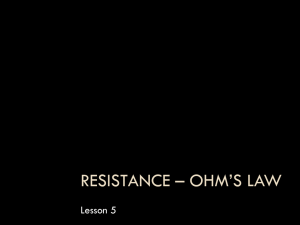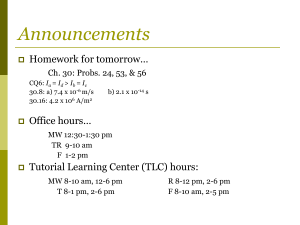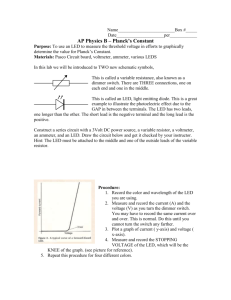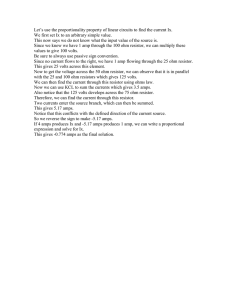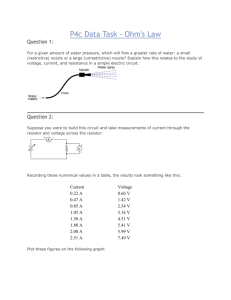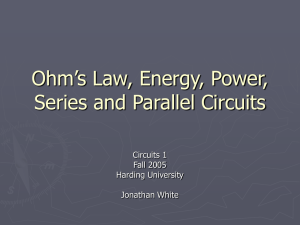This exercise examines Ohm`s law, one of the fundamental laws
advertisement
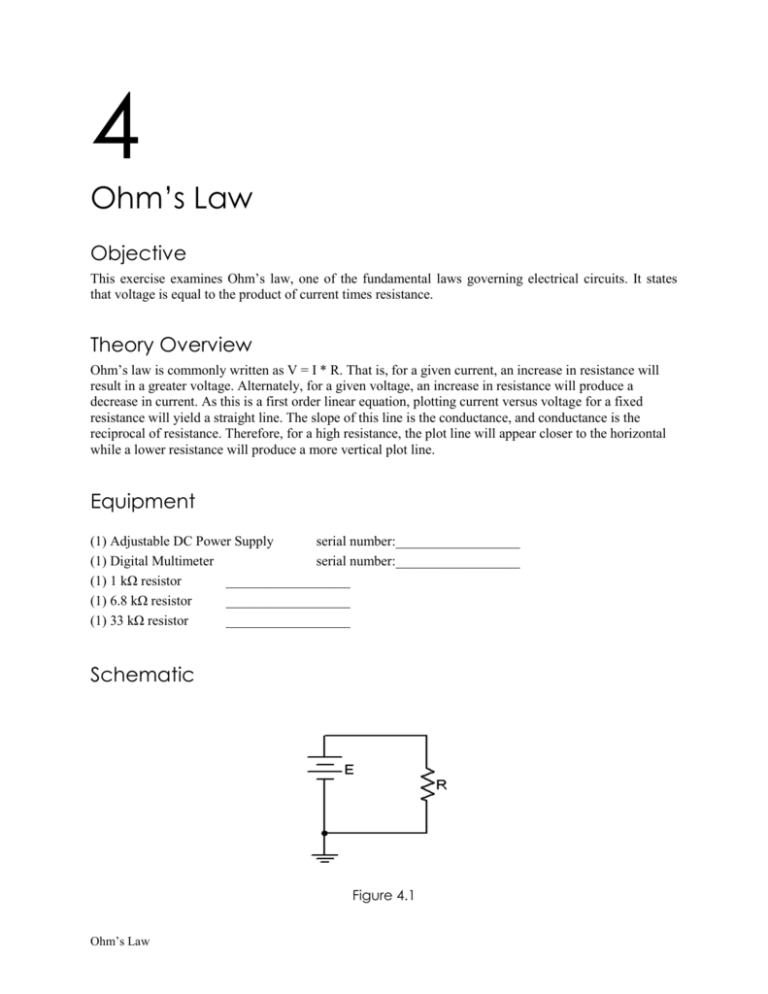
4 Ohm’s Law Objective This exercise examines Ohm’s law, one of the fundamental laws governing electrical circuits. It states that voltage is equal to the product of current times resistance. Theory Overview Ohm’s law is commonly written as V = I * R. That is, for a given current, an increase in resistance will result in a greater voltage. Alternately, for a given voltage, an increase in resistance will produce a decrease in current. As this is a first order linear equation, plotting current versus voltage for a fixed resistance will yield a straight line. The slope of this line is the conductance, and conductance is the reciprocal of resistance. Therefore, for a high resistance, the plot line will appear closer to the horizontal while a lower resistance will produce a more vertical plot line. Equipment (1) Adjustable DC Power Supply serial number:__________________ (1) Digital Multimeter serial number:__________________ (1) 1 kΩ resistor __________________ (1) 6.8 kΩ resistor __________________ (1) 33 kΩ resistor __________________ Schematic Figure 4.1 Ohm’s Law Procedure 1. Build the circuit of Figure 4.1 using the 1 kΩ resistor. Set the DMM to measure DC current and insert it in-line between the source and resistor. Set the source for zero volts. Measure and record the current in Table 4.1. Note that the theoretical current is 0 and any measured value other than 0 would produce an undefined percent deviation. 2. Setting E at 2 volts, determine the theoretical current based on Ohm’s law and record this in Table 4.1. Measure the actual current, determine the deviation, and record these in Table 4.1. Note that Deviation = 100 * (measured – theory) / theory. 3. Repeat step 2 for the remaining source voltages in Table 4.1. 4. Remove the 1 kΩ and replace it with the 6.8 kΩ. Repeat steps 1 through 3 using Table 4.2. 5. Remove the 6.8 kΩ and replace it with the 33 kΩ. Repeat steps 1 through 3 using Table 4.3. 6. Using the measured currents from Tables 4.1, 4.2, and 4.3, create a plot of current versus voltage. Plot all three curves on the same graph. Voltage is the horizontal axis and current is the vertical axis. Data Tables E (volts) I theory 0 0 I measured Deviation 2 4 6 8 10 12 Table 4.1 (1 kΩ) Exercise 4 E (volts) I theory 0 0 I measured Deviation 2 4 6 8 10 12 Table 4.2 (6.8 kΩ) E (volts) I theory 0 0 I measured Deviation 2 4 6 8 10 12 Table 4.3 (33 kΩ) Questions 1. Does Ohm’s Law appear to hold in this exercise? 2. Is there a linear relationship between current and voltage? 3. What is the relationship between the slope of the plot line and the circuit resistance? Ohm’s Law

